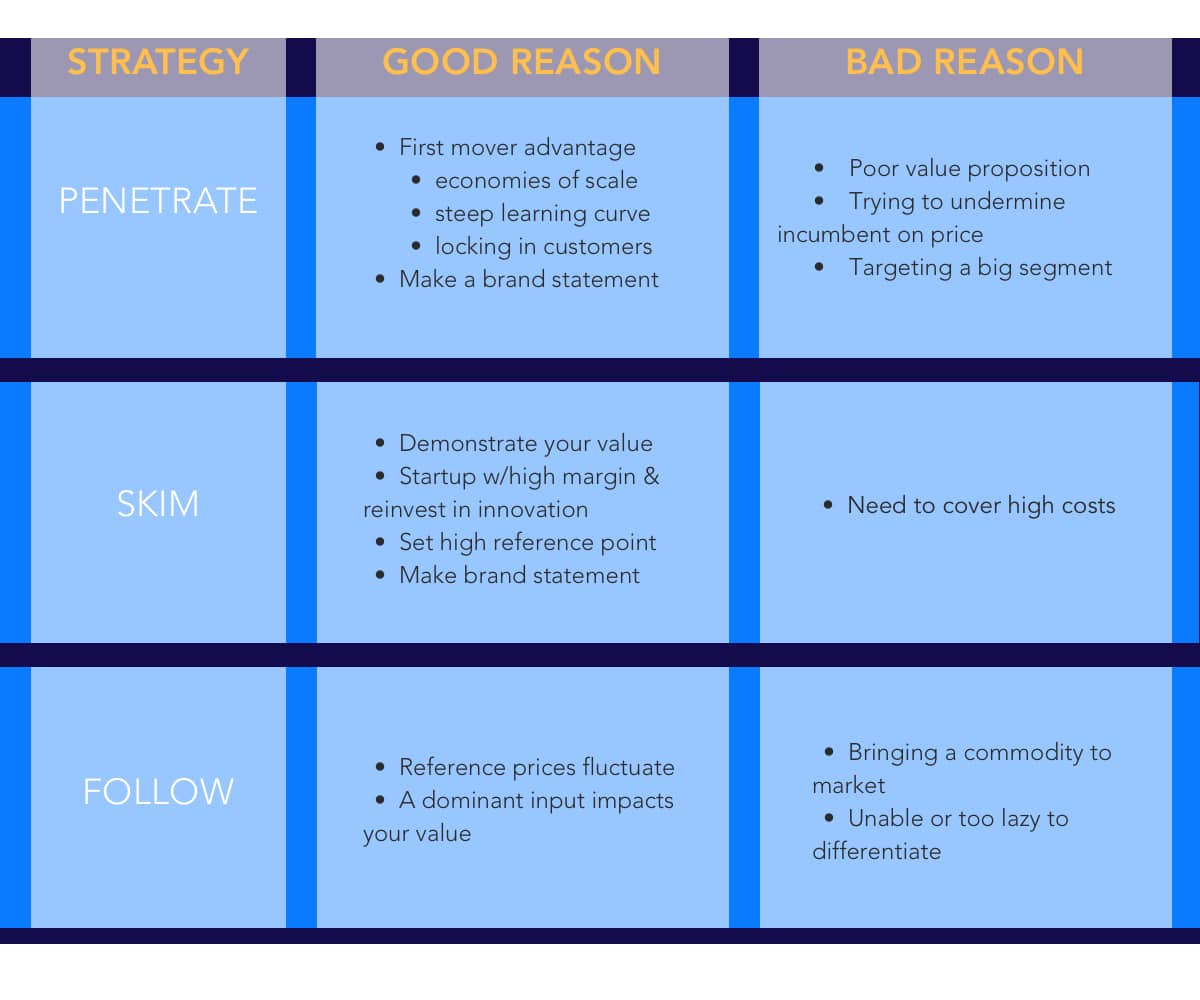The Secret Perks of Using Tiered Pricing Strategy for Your Company
The Secret Perks of Using Tiered Pricing Strategy for Your Company
Blog Article
Recognizing Pricing Techniques: A Guide to Boosting Competition
In an increasingly affordable landscape, mastering prices techniques is vital for businesses aiming to enhance their market placement. Recognizing competitor pricing and the psychological elements that influence customer behavior can produce a nuanced strategy to rates that resonates with target audiences.
Significance of Prices Strategies
In the affordable landscape of company, the value of pricing strategies can not be overstated. Rates works as a critical bar for companies, influencing both market positioning and customer assumption. A well-defined rates strategy can boost earnings, drive sales, and establish an affordable side.

Understanding client behavior is necessary in crafting rates methods. Insights into rate sensitivity, perceived worth, and competitive offerings permit organizations to adjust their pricing designs as necessary. Furthermore, routine assessment of rates efficiency is necessary to react to market dynamics and consumer patterns.
Ultimately, a durable pricing method is integral not just for revenue generation but likewise for long-term service stability. It forms brand identification, influences customer commitment, and plays a critical duty in the overall marketing strategy. Services should invest time and resources in developing and fine-tuning their rates approaches to thrive in an ever-evolving market.
Sorts Of Rates Models
How work figure out one of the most reliable means to price their solutions or products? The solution depends on understanding different rates versions, each matched to different market problems and organization objectives.
One prevalent model is cost-plus rates, where a fixed portion is included in the overall expense of production. This method guarantees that all costs are covered while generating a revenue. On the other hand, value-based prices concentrates on the viewed value of the product to the customer, enabling services to bill a costs based upon consumer demand and contentment.
An additional approach is dynamic prices, frequently utilized in markets such as traveling and friendliness. This design changes prices in real-time based on market demand, rival prices, and other outside aspects. Penetration pricing is also significant, where services initially set lower costs to go into a competitive market and gain market share, later on increasing rates as soon as a client base is established.
Finally, skimming rates includes setting high first prices for brand-new or innovative products, profiting from early adopters prior to reducing rates gradually. Recognizing these versions allows organizations to tactically position themselves in the market, aligning their prices strategies with their overarching objectives.

Analyzing Rival Rates
Recognizing competitor pricing is an essential element of developing an efficient pricing method. Organizations has Source to perform complete analyses of their competitors' pricing structures to recognize market positioning, examine prospective risks, and discover chances for differentiation. This entails accumulating data on competitors' prices, promotional approaches, and any rewards or discount rates they offer.
Assess their prices designs, consisting of any more info here type of tiered pricing systems, membership costs, or mass discount rates - Pricing Strategy. Recognizing the rationale behind these rates strategies can provide understandings into customer actions and choices.
It is also critical to keep track of adjustments in rival pricing routinely. Market characteristics can change rapidly, and remaining informed allows services to adjust their methods proactively. Consider the ramifications of rival pricing on your value recommendation. If competitors provide comparable items at lower rates, you might require to emphasize distinct marketing points or improve client service to warrant your pricing.
Eventually, assessing rival rates not just educates pricing choices yet also helps companies remain competitive in a frequently evolving market landscape.
Psychological Prices Techniques
Mental rates techniques leverage consumer psychology to influence acquiring choices and enhance the perceived value of items. One typical method is beauty pricing, where costs are set just listed below a rounded number, such as $9.99 instead of $10.00.
An additional efficient technique is status rates, where greater prices are connected with higher quality. This method interest customers' wish for condition and exclusivity, placing products as superior offerings. Additionally, packing items together at a discounted rate can produce a feeling of worth, triggering consumers to buy even more than they originally planned.
Shortage pricing, which highlights minimal availability or time-sensitive deals, published here can likewise activate urgency, pressing consumers to act swiftly. By comprehending and applying these mental prices techniques, services can efficiently form consumer assumptions, drive sales, and ultimately improve competitiveness in the marketplace.
Implementing and Readjusting Strategies

Once data is collected, businesses ought to examine their rates models versus current market conditions. This may include embracing vibrant pricing approaches that allow for real-time adjustments based on supply and demand changes. Organizations must likewise think about segmenting their market to customize rates for various consumer teams, enhancing perceived value and driving sales.
On a regular basis assessing prices techniques is important. This can be accomplished with A/B testing or customer responses, which offers insights into the effectiveness of current rates. Furthermore, companies should remain adaptable to adjust to unforeseen adjustments, such as economic downturns or arising rivals.
Final Thought
Finally, effective prices strategies work as a crucial part for businesses intending to improve competitiveness in a fluctuating market. By leveraging different rates models, examining competitor pricing, and utilizing emotional techniques, companies can better position themselves and communicate value to consumers. Frequently adjusting these strategies in action to market dynamics and customer behavior is necessary for guaranteeing long-lasting sustainability and earnings, ultimately fostering and driving sales consumer loyalty.
In a progressively competitive landscape, understanding pricing approaches is important for organizations aiming to improve their market placement. Understanding rival rates and the psychological elements that affect customer behavior can produce a nuanced strategy to pricing that resonates with target audiences.Recognizing rival prices is a crucial aspect of developing an efficient rates approach. Analyze their pricing designs, consisting of any kind of tiered pricing systems, membership fees, or bulk discount rates. By leveraging numerous rates models, assessing competitor prices, and utilizing emotional strategies, firms can much better position themselves and connect worth to customers.
Report this page